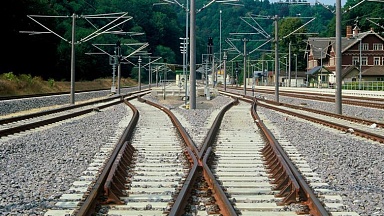Today, the Eurasian Economic Union (EAEU) consists of five member states: the Russian Federation, the Republic of Armenia, the Republic of Belarus, the Republic of Kazakhstan and the Kyrgyz Republic.
The length of the rail network of the EAEU member states exceeds 108 thousand km, with electrified lines totaling 50.6 thousand km.
Total cargo volumes handled by the rail network in the EAEU countries is about 1.6 billion tons per year. While annual cargo turnover exceeds 2.9 trillion tonnes per km, the passenger turnover is nearing the mark of 145 billion passenger per km.
Transport is one of the most important backbone areas of the EAEU member states’ economies, ensuring spatial connection, transport accessibility of regions, and population mobility.
The Treaty on the Eurasian Economic Union of May 29, 2014, signed by the EAEU member states, defined the main priorities for a coordinated (agreed) transport policy implemented in the EAEU, including the creation and development of Eurasian transport corridors, as well as the coordination of transport infrastructure development.
The development of East-West and North-South ITC infrastructure is the most important long-term strategic goal facing the EAEU Treaty economies, as it aims to capitalize on geographical advantages and realize the transit potential of EAEU countries through integration into global transport networks.
Global changes faced by the world’s logistics chains and market players come as a result of geopolitical events reshaping the current state of traditional international transport corridors, in which the EAEU member states are participants. These developments serve as a catalyst for creating and developing new transport routes.
The diversification and construction of new logistical routes that have taken place in recent years have made it possible to improve the efficiency of existing transportation routes and create long-term operation of new ones by 2023.
Last year, the EAEU approved a comprehensive plan for the expansion of Eurasian transportation routes. In addition, new projects have been added to the list of EAEU member states’ priority integration infrastructure projects in the transportation sector.
The strategic plans for Eurasian economic integration until 2025 are focused on creating and improving connectivity between the EAEU member states’ territories, as well as developing transportation and infrastructure in the East-West and North-South directions, including in conjunction with China’s One Belt, One Road initiative.





